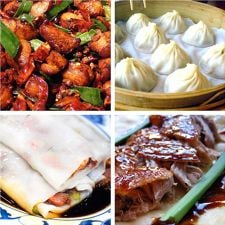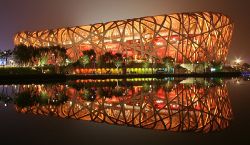People's Republic of China
- "PRC" redirects here.
For the Republic of China see Taiwan. For the civilization of China and its history see China.
| People's Republic of China 中华人民共和国 |
||||||
|---|---|---|---|---|---|---|
|
||||||
| Anthem: "March of the Volunteers" 义勇军进行曲 Yìyǒngjūn Jìnxíngqǔ |
||||||
| Land controlled by the People's Republic of China shown in dark green; claimed but uncontrolled land shown in light green.
|
||||||
| Capital | Beijing[1] | |||||
| Largest city | Shanghai | |||||
| Official language(s) | Standard Chinese[2] Portuguese (Macau only) English (Hong Kong only) |
|||||
| Recognised regional languages | Mongolian, Uyghur, Tibetan, Zhuang, various others | |||||
| Official script | Simplified Chinese[3] | |||||
| Ethnic groups | 91.51% Han
55 minorities |
|||||
| Demonym | Chinese | |||||
| Government | Unitary one-party socialist republic[4][5] | |||||
| - | Party General Secretary and President |
Xi Jinping[6] | ||||
| - | Premier | Li Keqiang | ||||
| - | Congress Chairman | Li Zhanshu | ||||
| - | Conference Chairman | Wang Yang | ||||
| - | First Secretary of the Party Secretariat | Wang Huning | ||||
| Legislature | National People's Congress | |||||
| Formation | ||||||
| - | First pre-imperial dynasty | c. 2070 B.C.E. | ||||
| - | First imperial dynasty | 221 B.C.E. | ||||
| - | Republic established | January 1, 1912 | ||||
| - | Proclamation of the People's Republic | October 1, 1949 | ||||
| - | Current constitution | December 4, 1982 | ||||
| - | Last polity admitted | December 20, 1999 | ||||
| Area | ||||||
| - | Total | 9,596,961 km2 [7](3rd/4th) 3,705,407 sq mi |
||||
| - | Water (%) | 2.8%[8] | ||||
| Population | ||||||
| - | 2016 estimate | |||||
| - | 2010 census | 1,339,724,852[9] (1st) | ||||
| - | Density | 148[10]/km2 (83rd) 373/sq mi |
||||
| GDP (PPP) | 2019 estimate | |||||
| - | Total | $27.331 trillion[11] (1st) | ||||
| - | Per capita | $19,520[11] (73rd) | ||||
| GDP (nominal) | 2019 estimate | |||||
| - | Total | $14.216 trillion[11] (2nd) | ||||
| - | Per capita | $10,153[11] (67th) | ||||
| Gini (2015[12]) | 46.2 | |||||
| HDI (2017[13]) | 0.752 (86th) | |||||
| Currency | Renminbi (yuan; ¥)[14] (CNY) |
|||||
| Time zone | China Standard Time (UTC+8) | |||||
| Date formats | yyyy-mm-dd or yyyy年m月d日 (CE; CE-1949) |
|||||
| Drives on the | right[15] | |||||
| Internet TLD | .cn, .中国, .中國 | |||||
| Calling code | +86 | |||||
The People's Republic of China (PRC) officially, often called China (Chinese: 中国; pinyin: Zhōngguó; literally "Central State"), is a country in East Asia. It is the world's most populous country. Covering approximately 9,600,000 square kilometers (3,700,000 sq mi), it is the third or fourth largest country by total area.[16] Governed by the Communist Party of China, the state exercises jurisdiction over 22 provinces, five autonomous regions, four direct-controlled municipalities (Beijing, Tianjin, Shanghai, and Chongqing), and the special administrative regions of Hong Kong and Macau.
China has one of the world's oldest civilizations, dating back more than six millennia. The Chinese Civil War resulted in a division of territory in 1949, when the Communist Party of China established the People's Republic of China, a unitary one-party sovereign state on the majority of China, while the Kuomintang-led nationalist government retreated to the island of Taiwan. The political status of Taiwan remains disputed.
The PRC is a permanent member of the United Nations Security Council as it replaced the Republic of China in 1971. It is an active global partner of ASEAN Plus Three as well as a leading member of numerous formal and informal multilateral organizations, including the Shanghai Cooperation Organization (SCO), WTO, APEC, BRICS, the BCIM, and the G20. The PRC has been characterized as an emerging superpower, mainly because of its massive population, economy, and military.
Names
The official name of the modern state on mainland China is the "People's Republic of China" (Chinese: 中华人民共和国 pinyin: Zhōnghuá Rénmín Gònghéguó).
The word "China" has been used in English since the sixteenth century. It is not a word used by the Chinese people themselves. It has been traced through Portuguese, Malay, and Persian back to the Sanskrit word Cīna, used in ancient India.
"China" appears in Richard Eden's 1555 translation of the 1516 journal of the Portuguese explorer Duarte Barbosa.[17] Barbosa's usage was derived from Persian Chīn (چین), which was in turn derived from Sanskrit Cīna (चीन). Cīna was first used in early Hindu scripture, including the Mahābhārata (fifth century B.C.E.) and the Laws of Manu (second century B.C.E.).
In 1655, Martino Martini suggested that the word China is derived ultimately from the name of the Qin dynasty (221–206 B.C.E.). "Qin" is pronounced as "Chin" which is considered the possible root of the word "China."[18] The Qin Dynasty unified the written language in China and gave the supreme ruler of China the title of "Emperor" instead of "King." Therefore, the subsequent Silk Road traders might have identified themselves by that name. Although this derivation is still given in various sources, it is complicated by the fact that the Sanskrit word appears in pre-Qin literature.
Geography
The People's Republic of China is the second-largest country in the world by land area[19] after Russia, and is either the third- or fourth-largest by total area, after Russia, Canada and, depending on the definition of total area, the United States. China's total area is generally stated as being approximately 9,600,000 km² (3,700,000 sq mi).
China has the longest combined land border in the world, measuring 22,117 km (13,743 mi) from the mouth of the Yalu River to the Gulf of Tonkin.[8] China borders 14 nations, more than any other country except Russia, which also borders 14. China extends across much of East Asia, bordering Vietnam, Laos, and Myanmar (Burma) in Southeast Asia; India, Bhutan, Nepal, Afghanistan, and Pakistan[20] in South Asia; Tajikistan, Kyrgyzstan, and Kazakhstan in Central Asia; and Russia, Mongolia, and North Korea in Inner Asia and Northeast Asia. Additionally, China shares maritime boundaries with South Korea, Japan, Vietnam, and the Philippines.
China's landscape is vast and diverse, ranging from the Gobi and Taklamakan Deserts in the arid north to subtropical forests in the wetter south. The Himalaya, Karakoram, Pamir, and Tian Shan mountain ranges separate China from much of South and Central Asia. The Yangtze and Yellow Rivers, the third- and sixth-longest in the world, respectively, run from the Tibetan Plateau to the densely populated eastern seaboard. China's coastline along the Pacific Ocean is 14,500 kilometers (9,000 mi) long and is bounded by the Bohai, Yellow, East China, and South China seas. China connects through the Kazakh border to the Eurasian Steppe which has been an artery of communication between East and West since the Neolithic through the Steppe route – the ancestor of the terrestrial Silk Road(s).
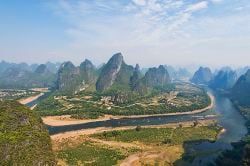
The territory of China lies between latitudes 18° and 54° N, and longitudes 73° and 135° E. China's landscapes vary significantly across its vast width. In the east, along the shores of the Yellow Sea and the East China Sea, there are extensive and densely populated alluvial plains, while on the edges of the Inner Mongolian plateau in the north, broad grasslands predominate. Southern China is dominated by hills and low mountain ranges, while the central-east hosts the deltas of China's two major rivers, the Yellow River and the Yangtze River. Other major rivers include the Xi, Mekong, Brahmaputra and Amur. To the west sit major mountain ranges, most notably the Himalayas. High plateaus feature among the more arid landscapes of the north, such as the Taklamakan and the Gobi Desert. The world's highest point, Mount Everest (8,848m), lies on the Sino-Nepalese border. The country's lowest point, and the world's third-lowest, is the dried lake bed of Ayding Lake (−154m) in the Turpan Depression.
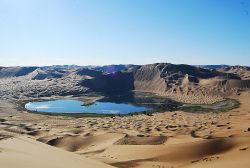
China's climate is mainly dominated by dry seasons and wet monsoons, which lead to pronounced temperature differences between winter and summer. In the winter, northern winds coming from high-latitude areas are cold and dry; in summer, southern winds from coastal areas at lower latitudes are warm and moist. The climate in China differs from region to region because of the country's highly complex topography.
A major environmental issue in China is the continued expansion of its deserts, particularly the Gobi Desert.[21] Although barrier tree lines planted since the 1970s have reduced the frequency of sandstorms, prolonged drought and poor agricultural practices have resulted in dust storms plaguing northern China each spring, which then spread to other parts of east Asia, including Korea and Japan.
In recent decades, China has suffered from severe environmental deterioration and pollution.[22] Urban air pollution is a severe health issue in the country. While regulations such as the 1979 Environmental Protection Law are fairly stringent, they are poorly enforced, as they are frequently disregarded by local communities and government officials in favor of rapid economic development.[23]
History
China has one of the world's oldest civilizations, dating back more than six millennia. It has the world's longest continuously used written language system: Chinese characters. It is also said to be the source of some of the world's great inventions, including the Four Great Inventions of ancient China: paper, the compass, gunpowder, and printing.
For more details on the history of Chinese civilizations, see History of China
Establishment of PRC and Maoism
On January 1, 1912, the Republic of China was established, heralding the end of the Qing Dynasty. Revolutionary leader Sun Yat-sen was proclaimed provisional president of the republic. After its victory in the Chinese Civil War, the Communist Party of China (CCP), led by Mao Zedong, controlled most of Mainland China. On October 1, 1949, they established the People's Republic of China (PRC), laying claim as the successor state of the ROC.[24] The central government of the ROC was forced to retreat to the island of Taiwan.
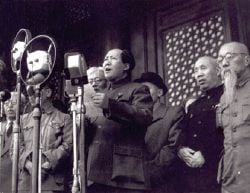
This was followed by a mass celebration in Tiananmen Square on October 1, which became the new country's first National Day. In 1950, the People's Liberation Army captured Hainan from the ROC[25] and also incorporated Tibet. However, remaining Kuomintang forces continued to wage an insurgency in western China throughout the 1950s.[26]
The regime consolidated its popularity among the peasants through land reform, which included the execution of between 1 and 2 million landlords.[27] The Chinese population increased from 550 million in 1950 to 900 million in 1974.[28] However, the Great Leap Forward, an idealistic massive reform project, resulted in an estimated 15 to 35 million deaths between 1958 and 1961, mostly from starvation.[29] In 1966, Mao and his allies launched the Cultural Revolution, sparking a decade of political recrimination and social upheaval which lasted until Mao's death in 1976. In October 1971, the PRC replaced the Republic of China in the United Nations, and took its seat as a permanent member of the Security Council.[30]
Economic Development
After Mao's death, the Gang of Four was quickly arrested and held responsible for the excesses of the Cultural Revolution. Deng Xiaoping took power in 1978, and instituted significant economic reforms. The Party loosened governmental control over citizens' personal lives, and the communes were gradually disbanded in favor of working contracted to households. This marked China's transition from a planned economy to a mixed economy with an increasingly open-market environment.[31] China adopted its current constitution on December 4, 1982. In 1989, the violent suppression of student protests in Tiananmen Square brought sanctions against the Chinese government from various countries.[32]
Jiang Zemin, Li Peng, and Zhu Rongji led the nation in the 1990s. Under their administration, China's economic performance pulled an estimated 150 million peasants out of poverty and sustained an average annual gross domestic product growth rate of 11.2 percent.[33] The country joined the World Trade Organization in 2001, and maintained its high rate of economic growth under Hu Jintao and Wen Jiabao's leadership in the 2000s. However, this growth also severely impacted the country's resources and environment,[34] and caused major social displacement.[35] Living standards continued to improve rapidly despite the late-2000s recession, but political control remained tight.
Lifetime Leadership
During the 18th National Communist Party Congress in November 2012, Hu Jintao was replaced as General Secretary of the Communist Party by Xi Jinping.[36] Under Xi, the Chinese government began large-scale efforts to reform its economy,[37] which had suffered from structural instabilities and slowing growth.[38] The administration also announced major reforms to the one-child policy and prison system.[39]
Xi has significantly centralized institutional power by taking on a wide range of leadership positions, including chairing the newly formed National Security Commission, as well as new steering committees on economic and social reforms, military restructuring and modernization, and the Internet. Said to be one of the most powerful leaders in modern Chinese history, Xi's political thoughts have been written into the party and state constitutions, making his status comparable to that of Mao Zedong and Deng Xiaoping.[40] Under his leadership the constitution was amended to abolish term limits for the presidency, making Xi the lifetime leader of the PRC, or as some have suggested "dictator for life."[41]
Government and Politics
The Constitution of the People's Republic of China states that the PRC "is a socialist state under the people's democratic dictatorship led by the working class and based on the alliance of workers and peasants," and that the state organs "apply the principle of democratic centralism."[42] The PRC is one of the world's only socialist states openly endorsing communism. The Chinese government has been variously described as communist and socialist, but also as authoritarian and corporatist, with heavy restrictions in many areas, most notably against free access to the Internet, freedom of the press, freedom of assembly, the right to have children, free formation of social organizations, and freedom of religion.[43]
Communist Party
Since 2018, the main body of the Chinese constitution declares that "the defining feature of socialism with Chinese characteristics is the leadership of the Communist Party of China (CPC)."[5] The 2018 amendments constitutionalized the de facto one-party state status of China, wherein the General Secretary (party leader) holds ultimate power and authority over state and government and serves as the paramount leader of China: "Xi’s most important title is general secretary, the most powerful position in the Communist Party. In China’s one-party system, this ranking gives him virtually unchecked authority over the government."[44]
The electoral system is pyramidal. Local People's Congresses are directly elected, and higher levels of People's Congresses up to the National People's Congress (NPC) are indirectly elected by the People's Congress of the level immediately below.[42] The political system is decentralized, and provincial and sub-provincial leaders have a significant amount of autonomy. However, the elected National People's Congress has been described as a "rubber stamp" body with the majority of members Communist Party members who are loyal to the party first, the NPC second.[45]
Government
The President is the titular head of state, elected by the National People's Congress. The Premier is the head of government, presiding over the State Council composed of four vice premiers and the heads of ministries and commissions.
There have been some moves toward political liberalization, in that open contested elections are now held at the village and town levels.[46] However, the party retains effective control over government appointments: in the absence of meaningful opposition, the CPC wins by default most of the time.
Administrative divisions
The People's Republic of China is divided into 22 provinces, five autonomous regions, each with a designated minority group; four municipalities; and two special administrative regions (SARs) which enjoy a degree of political autonomy. These 31 provincial-level divisions can be collectively referred to as "mainland China", a term which usually excludes two SARs of Hong Kong and Macau. Geographically, all 31 provincial divisions can be grouped into six regions, including North China, Northeast China, East China, South Central China, Southwest China, and Northwest China.
The PRC considers Taiwan to be its 23rd province, although Taiwan is governed by the Republic of China, which rejects the PRC's claim.[47]
Foreign relations
The PRC has diplomatic relations with 175 countries and maintains embassies in 162. Its legitimacy is disputed by the Republic of China and a few other countries; it is thus the largest and most populous state with limited recognition. In 1971, the PRC replaced the Republic of China as the sole representative of China in the United Nations and as one of the five permanent members of the United Nations Security Council.[48] China was also a former member and leader of the Non-Aligned Movement, and considers itself an advocate for developing countries.[49] Along with Brazil, Russia, India, and South Africa, China is a member of the BRICS group of emerging major economies and hosted the group's third official summit at Sanya, Hainan in April 2011.[50]
Under its interpretation of the One-China policy, Beijing has made it a precondition to establishing diplomatic relations that the other country acknowledges its claim to Taiwan and severs official ties with the government of the Republic of China. Chinese officials have protested on numerous occasions when foreign countries have made diplomatic overtures to Taiwan.[51]
Much of current Chinese foreign policy is reportedly based on Premier Zhou Enlai's Five Principles of Peaceful Coexistence, and is also driven by the concept of "harmony without uniformity", which encourages diplomatic relations between states despite ideological differences.[52] China appears to have a close economic and military relationship with Russia.[53]
Trade relations
China became a member of the World Trade Organization (WTO) on December 11, 2001. In 2004, it proposed an entirely new East Asia Summit (EAS) framework as a forum for regional security issues.[54] The EAS, which includes ASEAN Plus Three, India, Australia, and New Zealand, held its inaugural summit in 2005. China is also a founding member of the Shanghai Cooperation Organization (SCO), along with Russia and the Central Asian republics.
In the twenty-first century, China began a policy of engaging with African nations for trade and bilateral co-operation.[55]
The PRC has had a long and complex trade relationship with the United States, and maintains highly diversified trade links with the European Union. China has strengthened its ties with major South American economies, becoming the largest trading partner of Brazil and building strategic links with Argentina.[56]
Territorial disputes
Ever since its establishment after the second Chinese Civil War, the PRC has claimed the territories governed by the Republic of China (ROC), a separate political entity today commonly known as Taiwan, as a part of its territory. It regards the island of Taiwan as its Taiwan Province, Kinmen, and Matsu as a part of Fujian Province and islands the ROC controls in the South China Sea as a part of Hainan Province and Guangdong Province. These claims are controversial because of the complicated Cross-Strait relations, with the PRC treating the One-China policy as one of its most important diplomatic principles.
In addition to Taiwan, China is also involved in other international territorial disputes. Since the 1990s, China has been involved in negotiations to resolve its disputed land borders, including a disputed border with India and an undefined border with Bhutan. China is additionally involved in multilateral disputes over the ownership of several small islands in the East and South China Seas, such as the Senkaku Islands[57] and the Scarborough Shoal.[58]
Sociopolitical issues, human rights and reform
The Chinese democracy movement, social activists, and some members of the Communist Party of China have all identified the need for social and political reform. While economic and social controls have been significantly relaxed in China since the 1970s, political freedom is still tightly restricted. The Constitution of the People's Republic of China states that the "fundamental rights" of citizens include freedom of speech, freedom of the press, the right to a fair trial, freedom of religion, universal suffrage, and property rights. However, in practice, these provisions do not afford significant protection against criminal prosecution by the state.[59] Although some criticisms of government policies and the ruling Communist Party are tolerated, censorship of political speech and information, most notably on the Internet, are routinely used to prevent collective action.[60] China plans to give all its citizens a personal "Social Credit" score based on how they behave.[61] The Social Credit System, now being piloted in a number of Chinese cities, is considered a form of mass surveillance which uses big data analysis technology.[62]
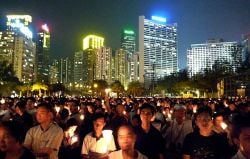
A number of foreign governments, foreign press agencies, and NGOs also routinely criticize China's human rights record, alleging widespread civil rights violations such as detention without trial, forced abortions, forced confessions, torture, restrictions of fundamental rights,[43] and excessive use of the death penalty.[63] The government suppresses popular protests and demonstrations that it considers a potential threat to "social stability," as was the case with the Tiananmen Square protests of 1989.
The Chinese state is regularly accused of large-scale repression and human rights abuses in Tibet and Xinjiang, including violent police crackdowns and religious suppression.[64][65] At least 120,000 members of China's Muslim Uyghur minority have been detained in mass detention camps, termed "reeducation camps", aimed at changing the political thinking of detainees, their identities, and their religious beliefs.[66] Persecution of Falun Gong has resulted in mass arrests, extralegal detention, and reports of torture and deaths in custody.[67]
The Chinese government has responded to foreign criticism by arguing that the right to subsistence and economic development is a prerequisite to other types of human rights, and that the notion of human rights should take into account a country's present level of economic development. It emphasizes the rise in the Chinese standard of living, literacy rate, and average life expectancy since the 1970s, as well as improvements in workplace safety and efforts to combat natural disasters such as the perennial Yangtze River floods.[68] During the 2000s and early 2010s, the Chinese government was increasingly tolerant of NGOs that offer practical, efficient solutions to social problems, but such "third sector" activity remained heavily regulated.[69]
The Chinese penal system includes labor prison factories, detention centers, and re-education camps, which fall under the heading Laogai ("reform through labor"). The Laogai Research Foundation in the United States estimated that there were over a thousand slave labor prisons and camps, known collectively as the Laogai.[70] Many of the prisoners are political or religious dissidents, and some are recognized internationally as prisoners of conscience.
Military
The People's Liberation Army (PLA) is the largest standing military force in the world, commanded by the Central Military Commission (CMC). The PLA consists of the Ground Force (PLAGF), the Navy (PLAN), the Air Force (PLAAF), and the People's Liberation Army Rocket Force (PLARF). China has the second-biggest military reserve force, only behind North Korea.
As a recognized nuclear weapons state, China is considered both a major regional military power and a potential military superpower.
The PRC has developed numerous power projection assets since the early 2000s – its first aircraft carrier entered service in 2012,[71][72] and it maintains a substantial fleet of submarines, including several nuclear-powered attack and ballistic missile submarines.[73] China has furthermore established a network of foreign military relationships along critical sea lanes.[74]
China has made significant progress in modernizing its air force in recent decades, purchasing Russian fighter jets such as the Sukhoi Su-30, and also manufacturing its own modern fighters, most notably the Chengdu J-10, J-20 and the Shenyang J-11, J-15, J-16, and J-31.[71] China is furthermore engaged in developing an indigenous stealth aircraft and numerous combat drones.[75] Air and Sea denial weaponry advances have increased the regional threat from the perspective of Japan as well as Washington.[76] China has also updated its ground forces as well as developing or acquiring numerous advanced missile systems including submarine-launched nuclear ICBMs.[77]
In August 2018, the China Academy of Aerospace Aerodynamics (CAAA) tested its first hypersonic flight.[78]
Economy
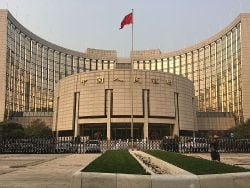
Since economic reforms began in 1978, the PRC has developed into a highly diversified economy and one of the most consequential players in international trade. Major sectors of competitive strength include manufacturing, retail, mining, steel, textiles, automobiles, energy generation, green energy, banking, electronics, telecommunications, real estate, e-commerce, and tourism.
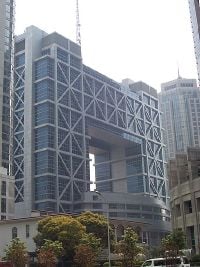
China brought more people out of extreme poverty than any other country in history[79] However, its development is highly uneven. Major cities and coastal areas are far more prosperous compared to rural and interior regions.
From its founding in 1949 until late 1978, the People's Republic of China was a Soviet-style centrally planned economy. Following Mao's death in 1976 and the consequent end of the Cultural Revolution, Deng Xiaoping and the new Chinese leadership began to reform the economy and move towards a more market-oriented mixed economy under one-party rule. Agricultural collectivization was dismantled and farmlands privatized, while foreign trade became a major new focus, leading to the creation of Special Economic Zones (SEZs). Inefficient state-owned enterprises (SOEs) were restructured and unprofitable ones were closed outright, resulting in massive job losses. Modern-day China is mainly characterized as having a market economy based on private property ownership, and is one of the leading examples of state capitalism.[80] The state still dominates in strategic "pillar" sectors such as energy production and heavy industries, but private enterprise has expanded enormously.[81]
Its high productivity, low labor costs, and relatively good infrastructure have made it a global leader in manufacturing. China has also been increasingly turning to automation, becoming the world's largest market for industrial robots. However, the Chinese economy is highly energy-intensive and inefficient. China became the world's largest energy consumer in 2010.[82]
The PRC is a member of the World Trade Organization and is the world's largest trading power. Its undervalued exchange rate has caused friction with other major economies, and it has also been widely criticized for manufacturing large quantities of counterfeit goods.[83]
Following the 2007-2008 financial crisis, Chinese authorities sought to actively wean off of its dependence on the U.S. Dollar as a result of perceived weaknesses of the international monetary system.[84] To achieve those ends, China took a series of actions to further the internationalization of the Renminbi. As a result of the rapid internationalization of the renminbi, it became the one of the top ten most traded currencies in the world, an emerging international reserve currency.[85]
Science and technology
After the Communists came to power in 1949, efforts were made to organize science and technology based on the model of the Soviet Union, in which scientific research was part of central planning.[86] After Mao's death in 1976, science and technology was established as one of the Four Modernizations,[87] and the Soviet-inspired academic system was gradually reformed.
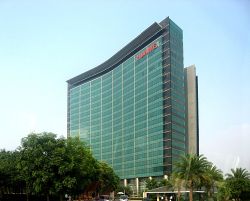
Since the end of the Cultural Revolution, China has made significant investments in scientific research. Chinese-born scientists have won the Nobel Prize in Physics four times, the Nobel Prize in Chemistry and Physiology or Medicine once respectively, though most of these scientists conducted their Nobel-winning research in western nations.
Chinese technology companies such as Huawei and Lenovo have become world leaders in telecommunications and personal computing, and Chinese supercomputers are consistently ranked among the world's most powerful. China has also expanded its use of industrial robots.
The Chinese space program is one of the world's most active, and is a major source of national pride.
Telecommunications
China is the largest telecom market in the world with the largest number of active cellphones of any country in the world. It also has the world's largest number of internet and broadband users.
China Mobile, China Unicom, and China Telecom, are the three large providers of mobile and internet in China. Several Chinese telecommunications companies, most notably Huawei and ZTE, have been accused of spying for the Chinese military.[88]
China has developed its own satellite navigation system, dubbed Beidou, which began offering commercial navigation services across Asia in 2012 and providing global services at the end of 2018.[89] China belongs to the elite group of three countries—US and Russia being the other two members—that provide global satellite navigation.
Transport
Since the late 1990s, China's national road network has been significantly expanded through the creation of a network of national highways and expressways, reaching a total length of 142,500 km (88,500 mi), making it the longest highway system in the world.[90] China's railways reached a total length of 127,000 km by 2017.[91] In 1991, there were only six bridges across the main stretch of the Yangtze River, which bisects the country into northern and southern halves. By October 2014, there were 81 such bridges and tunnels.
China has the world's largest market for automobiles, having surpassed the United States in both auto sales and production. A side-effect of the rapid growth of China's road network has been a significant rise in traffic accidents. In urban areas, bicycles remain a common mode of transport.
China's high-speed rail (HSR) system started construction in the early 2000s. By the end of 2018, high speed rail in China had over 29,000 kilometers (18,020 mi) of dedicated lines alone, a length that exceeds rest of the world's high-speed rail tracks combined, making it the longest HSR network in the world. In May 2019, China released a prototype for a maglev high-speed train that would reach a speed of 600 km/hr (375 mph); and it's expected to go into commercial production by 2021.[92]
With rapid expansion in civil aviation, the largest airports in China have joined the ranks of the busiest in the world. In 2018, Beijing's Capital Airport ranked second in the world by passenger traffic (it was 26th in 2002). Since 2010, the Hong Kong International Airport and Shanghai Pudong International Airport have ranked first and third in air cargo tonnage. Some 80 percent of China's airspace remains restricted for military use, and Chinese airlines made up eight of the 10 worst-performing Asian airlines in terms of delays.[93]
China has over 2,000 river and seaports, about 130 of which are open to foreign shipping. In 2017, the Ports of Shanghai, Hong Kong, Shenzhen, Ningbo-Zhoushan, Guangzhou, Qingdao, and Tianjin ranked in the Top 10 in the world in container traffic and cargo tonnage.
Demographics
China, with its large population of over 1.3 million, used to make up much of the world's poor; now it makes up much of the world's middle class. China's rapid growth has pulled hundreds of millions of its people out of poverty since 1978.[94] Since 2012, when Xi Jinping took office, drastic solutions have been implemented to eliminate poverty, including relocation of those living in inhospitable areas. This continues the urbanization push begun under Deng Xiaoping which eliminated rural farming communes and designated special economic zones in coastal cities.[95]
China has urbanized significantly in recent decades. The percent of the country's population living in urban areas increased from 20 percent in 1980 to almost 60 percent by 2018.[96] It is estimated that China's urban population will reach one billion by 2030, potentially equivalent to one-eighth of the world population. Such an increase in urbanization has come with problems, both economic and environmental. Farmers have had their land seized for development, resulting in an excess of high rise buildings that remain mostly vacant, resulting in serious economic problems for the local governments. In the cities, the greatly increased use of cars has led to serious air pollution.[97]
Given concerns about population growth, China implemented a two-child limit during the 1970s, and, in 1979, began to advocate for an even stricter limit of one child per family. Beginning in the mid 1980s, however, given the unpopularity of the strict limits, China began to allow some major exemptions, particularly in rural areas, resulting in what was actually a "1.5"-child policy from the mid-1980s to 2015 (ethnic minorities were also exempt from one child limits). The next major loosening of the policy was enacted in December 2013, allowing families to have two children if one parent is an only child.[98] In 2016, the one-child policy was replaced in favor of a two-child policy.
The policy, along with traditional preference for boys, may have contributed to an imbalance in the sex ratio at birth. According to the 2010 census, the sex ratio at birth was 118.06 boys for every 100 girls.[99]
Ethnic groups
China legally recognizes 56 distinct ethnic groups, who altogether comprise the Zhonghua Minzu. The largest of these nationalities are the Han Chinese, who constitute about 90 percent of the total population.[9] The Han Chinese outnumber other ethnic groups in every provincial-level division except Tibet and Xinjiang.[100]
Languages
Standard Mandarin, a variety of Mandarin based on the Beijing dialect, is the official national language of China and is used as a lingua franca in the country between people of different linguistic backgrounds.
There are as many as 300 living languages in China.[101] The languages most commonly spoken belong to the Sinitic branch of the Sino-Tibetan language family, which contains Mandarin (spoken by 70 percent of the population),[102] and other varieties of Chinese language: Yue (including Cantonese and Taishanese), Wu (including Shanghainese and Suzhounese), Min (including Fuzhounese, Hokkien, and Teochew), Xiang, Gan, and Hakka. Languages of the Tibeto-Burman branch, including Tibetan, Qiang, Naxi, and Yi, are spoken across the Tibetan and Yunnan–Guizhou Plateau. Other ethnic minority languages in southwest China include Zhuang, Thai, Dong, and Sui of the Tai-Kadai family, Miao and Yao of the Hmong–Mien family, and Wa of the Austroasiatic family. Across northeastern and northwestern China, local ethnic groups speak Altaic languages including Manchu, Mongolian, and several Turkic languages: Uyghur, Kazakh, Kyrgyz, Salar, and Western Yugur. Korean is spoken natively along the border with North Korea. Sarikoli, the language of Tajiks in western Xinjiang, is an Indo-European language. Taiwanese aborigines, including a small population on the mainland, speak Austronesian languages.
Chinese characters have been used as the written script for the Sinitic languages for thousands of years. They allow speakers of mutually unintelligible Chinese varieties to communicate with each other through writing. In 1956, the government introduced simplified characters, which have supplanted the older traditional characters in mainland China. Chinese characters are romanized using the Pinyin system.
Education
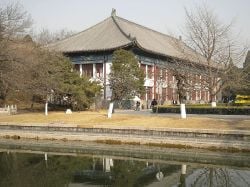
Since 1986, compulsory education in China comprises primary and junior secondary school, which together last for nine years. By 2010, over 80 percent of students continued their education at a three-year senior secondary school, with this number expected to continue increasing.[103] The Gaokao, China's national university entrance exam, is a prerequisite for entrance into most higher education institutions. The number of students at this level increased significantly over the last years, reaching a tertiary school enrollment of 48.4 percent in 2016.[104] Vocational education is also available to students. In February 2006, the government pledged to provide completely free nine-year education, including textbooks and fees.[105]
By 2010, 95 percent of the population over age 15 were literate,[106] compared to only 20 percent in 1949, and 65.5 percent in 1980.[107] In 2009, Chinese students from Shanghai achieved the world's best results in mathematics, science, and literacy, as tested by the Programme for International Student Assessment (PISA), a worldwide evaluation of 15-year-old school pupils' scholastic performance.[108]
Despite the high results, Chinese education has faced both internal and international criticism for its emphasis on rote memorization and the gap in quality from rural to urban areas.[109] There remains an inequality in spending on education, with some families paying high costs while their children are placed in overcrowded classrooms.[110]
Health
The National Health Commission oversees the health needs of the Chinese population. An emphasis on public health and preventive medicine has characterized Chinese health policy since the early 1950s. At that time, the Communist Party started the Patriotic Health Campaign, which was aimed at improving sanitation and hygiene, as well as treating and preventing several diseases. Diseases such as cholera, typhoid. and scarlet fever, which were previously rife in China, were nearly eradicated by the campaign. After Deng Xiaoping began instituting economic reforms in 1978, the health of the Chinese public improved rapidly because of better nutrition, although many of the free public health services provided in the countryside disappeared along with the People's Communes as healthcare became mostly privatized.[111] In 2009, the government began a 3-year large-scale healthcare provision initiative worth US$124 billion. By 2011, the campaign resulted in 95 percent of China's population having basic health insurance coverage.[112]
Despite significant improvements in health and the construction of advanced medical facilities, China has several emerging public health problems, such as respiratory illnesses caused by widespread air pollution, hundreds of millions of cigarette smokers,[113] and an increase in obesity among urban youths.[114] China's large population and densely populated cities have led to serious disease outbreaks in recent years, such as the 2003 outbreak of SARS.[115]
In 2011, China was estimated to be the world's third-largest supplier of pharmaceuticals, but its population has suffered from the development and distribution of counterfeit medications.[116]
Religion
The government of the People's Republic of China officially espouses state atheism. Religious affairs and issues in the country are overseen by the State Administration for Religious Affairs. Freedom of religion is guaranteed by China's constitution, although religious organizations that lack official approval can be subject to state persecution.[117]
Clear data on religious affiliation in China is difficult to gather due to varying definitions of "religion" and the unorganized, diffusive nature of Chinese religious traditions. Scholars note that in China there is no clear boundary between three teachings (Confucianism, Taoism, and Buddhism) and local folk religious practice.[118] A 2015 poll conducted by Gallup International found that 61 percent of Chinese people self-identified as "convinced atheist,"[119] though it is worthwhile to note that some Chinese religions are definable as non-theistic and humanistic religions, since they do not believe that divine creativity is completely transcendent, but rather is inherent in the world and particularly in human beings.[120] Confucianism as a religious self-identification is common within the intellectual class.
In addition to Han people's local religious practices, there are also various ethnic minority groups who maintain their traditional religions. Significant faiths specifically connected to certain ethnic groups include Tibetan Buddhism and the Islamic religion of the Hui, Uyghur, Kazakh, Kyrgyz, and other peoples in Northwest China.
Culture
The first leaders of the People's Republic of China were born into the traditional imperial order, but were influenced by the May Fourth Movement and reformist ideals. They sought to change some traditional aspects of Chinese culture, such as rural land tenure, sexism, and the Confucian system of education, while preserving others, such as the family structure and culture of obedience to the state. Many important aspects of traditional Chinese morals and culture, such as Confucianism, art, literature, and performing arts like Peking opera, were altered to conform to government policies and propaganda at the time. Access to foreign media remains heavily restricted.[122]
Today, the Chinese government has accepted numerous elements of traditional Chinese culture as being integral to Chinese society. Chinese culture has long emphasized a sense of deep history and a largely inward-looking national perspective.[123] It has been heavily influenced by Confucianism. Examinations and a culture of merit remain greatly valued in China today.
With the rise of Chinese nationalism and the end of the Cultural Revolution, various forms of traditional Chinese art, literature, music, film, fashion, and architecture have seen a vigorous revival, and folk and variety art in particular have sparked interest nationally and even worldwide. China has became a popular tourist destination.[124]
Literature
After coming to power in 1949, the Communists gradually nationalized the publishing industry, centralized the book distribution system, and brought writers under institutional control through the Writers Union. A system of strict censorship was implemented, with Mao's Yan'an Talks as the guiding force. Socialist realism became the uniform style, and many Soviet works were translated. Despite the literary control and strictures to limit subjects to contemporary China and the glories of the revolution, writers produced widely read novels of energy and commitment.
Various literary genres, such as misty poetry, scar literature, young adult fiction, and xungen literature which is influenced by magic realism, emerged following the Cultural Revolution (1966 through 1976). Mo Yan, a xungen literature author, was awarded the Nobel Prize in Literature in 2012.[125]
Cuisine
Chinese cuisine is highly diverse, drawing on several millennia of culinary history and geographical variety, in which the most influential are known as the "Eight Major Cuisines", including Sichuan, Cantonese, Jiangsu, Shandong, Fujian, Hunan, Anhui, and Zhejiang cuisines.[126]
Generally, China's staple food is rice in the south and wheat-based breads and noodles in the north. The diet of the common people in pre-modern times was largely grain and simple vegetables, with meat reserved for special occasions. Bean products, such as tofu and soy milk, remain as a popular source of protein. Pork is now the most popular meat in China, accounting for about three-fourths of the country's total meat consumption.[127] While pork dominates the meat market, there is also vegetarian Buddhist cuisine and the pork-free Chinese Islamic cuisine. Southern cuisine, due to the area's proximity to the ocean and milder climate, has a wide variety of seafood and vegetables. Numerous offshoots of Chinese food, such as Hong Kong cuisine and American Chinese food, have emerged in the nations that play host to the Chinese diaspora.
Sports
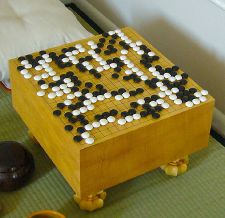
China has one of the oldest sporting cultures in the world. There is evidence that archery (shèjiàn) was practiced during the Western Zhou dynasty. Swordplay (jiànshù) and cuju, a sport loosely related to association football[128] date back to China's early dynasties as well.[129] Many traditional sports, such as dragon boat racing, Mongolian-style wrestling, and horse racing remain popular.
Physical fitness is widely emphasized in Chinese culture, with morning exercises such as qigong and t'ai chi ch'uan widely practiced, and commercial gyms and private fitness clubs popular across the country.
Basketball is the most popular spectator sport in China. The Chinese Basketball Association and the American National Basketball Association have a huge following among the people, with native or ethnic Chinese players such as Yao Ming and Yi Jianlian held in high esteem. China's professional football league, now known as Chinese Super League, was established in 1994. Other popular sports in the country include martial arts, table tennis, badminton, swimming, and snooker. Board games such as go (known as wéiqí in Chinese), xiangqi, mahjong, and more recently chess, are also played at a professional level.
China has participated in the Olympic Games since 1932, although it has only participated as the PRC since 1952. China hosted the 2008 Summer Olympics in Beijing. In 2011, China hosted the 2011 Summer Universiade in Shenzhen in Guangdong Province. China hosted the 2013 East Asian Games in Tianjin and the 2014 Summer Youth Olympics in Nanjing. Beijing and its nearby city Zhangjiakou of Hebei province collaboratively host the 2022 Olympic Winter Games, which makes Beijing the first city in the world to hold both the Summer Olympics and the Winter Olympics.[130]
Notes
- ↑ Romanized as "Peking" prior to the adoption of Pinyin.
- ↑ Law of the People's Republic of China on the Standard Spoken and Written Chinese Language (Order of the President No.37) Chinese Government, October 31, 2000. Retrieved September 6, 2019.
- ↑ In the special administrative regions of Hong Kong and Macau, Traditional Chinese characters are used. The Mongolian script is used in Inner Mongolia and the Tibetan script is used in the Tibetan Autonomous Region, alongside simplified Chinese.
- ↑ China (People’s Republic of) 1982 (rev. 2004) Retrieved September 6, 2019.
- ↑ 5.0 5.1 Changhao Wei, Annotated Translation: 2018 Amendment to the P.R.C. Constitution (Version 2.0) NPC Observer. Retrieved September 6, 2019.
- ↑ Xi Jinping holds four concurrent positions: General Secretary of the Communist Party of China (de facto paramount leader), President of the People's Republic of China (head of state), and Chairman of the Central Military Commission (Commander-in-chief) for both state and party.
- ↑ The area given is the official United Nations figure for the mainland and excludes Hong Kong, Macau and Taiwan. It also excludes the Trans-Karakoram Tract (5,800 km2 or 2,200 sq mi), Aksai Chin (37,244 km2 or 14,380 sq mi) and other territories in dispute with India.
- ↑ 8.0 8.1 CIA, China World Factbook. Retrieved September 17, 2019.
- ↑ 9.0 9.1 Communiqué of the National Bureau of Statistics of People's Republic of China on Major Figures of the 2010 Population Census (No. 1) National Bureau of Statistics of China, April 28, 2011. Retrieved September 6, 2019.
- ↑ Population density (people per sq. km of land area) The World Bank, 2019. Retrieved September 6, 2019.
- ↑ 11.0 11.1 11.2 11.3 World Economic Outlook Database, April 2019 IMF. Retrieved September 6, 2019.
- ↑ China's Economy Realized a Moderate but Stable and Sound Growth in 2015 National Bureau of Statistics of China, January 19, 2016. Retrieved September 6, 2019.
- ↑ Human Development Indices and Indicators: 2018 Statistical update United Nations Development Programme, 2018. Retrieved September 6, 2019.
- ↑ The Hong Kong Dollar is used in Hong Kong and Macau while the Macanese pataca is used in Macau only.
- ↑ Motor vehicles and metros drive on the right in mainland China. Hong Kong and Macau use left-hand traffic except several parts of metro lines. The majority of the country's trains drive on the left.
- ↑ The total area ranking relative to the United States depends on the measurement of the total areas of China and the United States.
- ↑ Oxford English Dictionary (Oxford University Press, 2009, ISBN 0199573158).
- ↑ The American Heritage Dictionary of the English Language (Houghton-Mifflin, 2018, ISBN 1328841693).
- ↑ Amitendu Palit, China-India Economics: Challenges, Competition and Collaboration (Routledge, 2011, ISBN 978-0415598316).
- ↑ China's border with Pakistan and part of its border with India falls in the disputed region of Kashmir. The area under Pakistani administration is claimed by India, while the area under Indian administration is claimed by Pakistan.
- ↑ Terry Waghorn, Fighting Desertification Forbes, March 7, 2011. Retrieved September 17, 2019.
- ↑ Xiaoying Ma and Leonard Ortolano, Environmental Regulation in China (Rowman & Littlefield Publishers, 2000, ISBN 0847693996).
- ↑ Kimberley Soekov, China protesters force halt to Zhejiang factory plan BBC, October 28, 2012. Retrieved September 17, 2019.
- ↑ Anthony Kubek, How the Far East Was Lost: American policy and the creation of Communist China (Literary Licensing, LLC, 2012, ISBN 1258315785).
- ↑ Seymour Topping, Red Capture of Hainan Island The Tuscaloosa News, May 9, 1950. Retrieved September 17, 2019.
- ↑ John W. Garver, The Sino-American Alliance: Nationalist China and American Cold War Strategy in Asia (Routledge, 1997, ISBN 0765600250).
- ↑ Donald F. Busky, Communism in History and Theory (Greenwood Publishing Group, 2002).
- ↑ Madelyn Holmes, Students and Teachers of the New China: Thirteen Interviews (McFarland, 2007, ISBN 0786432888).
- ↑ Leslie Holmes, Communism: A Very Short Introduction (Oxford University Press, 2009, ISBN 0199551545).
- ↑ Harvey Feldman and Michael Y. M. Kau (eds.), Taiwan in a Time of Transition (PWPA Books, 1989, ISBN 0943852633).
- ↑ Martin Hart-Landsberg and Paul Burkett, China and Socialism: Market Reforms and Class Struggle (Monthly Review Press, 2005, ISBN 1583671242).
- ↑ Harry Harding, The Impact of Tiananmen on China's Foreign Policy NBR Analysis 1(3) December 1, 1990. Retrieved September 17, 2019.
- ↑ Nation bucks trend of global poverty China Daily, July 11, 2003. Retrieved September 17, 2019.
- ↑ China's Environmental Crisis The New York Times, August 26, 2007. Retrieved September 17, 2019.
- ↑ Edward Cody, In Face of Rural Unrest, China Rolls Out Reforms The Washington Post, January 28, 2006. Retrieved September 17, 2019.
- ↑ Malcolm Moore and Tom Phillips, Xi Jinping crowned new leader of China Communist Party The Daily Telegraph, November 15, 2012. Retrieved September 17, 2019.
- ↑ Ambrose Evans-Pritchard, China eyes fresh stimulus as economy stalls, sets 7pc growth floor The Daily Telegraph, July 23, 2013. Retrieved September 17, 2019.
- ↑ Gavyn Davies, The decade of Xi Jinping Financial Times, November 25, 2012. Retrieved September 17, 2019.
- ↑ Matthew Yglesias,China Ends One-Child Policy Slate, November 15, 2013. Retrieved September 17, 2019.
- ↑ Jun Mai and Choi Chi-yuk, Xi Jinping’s political thought will be added to Chinese Communist Party constitution, but will his name be next to it? South China Morning Post, September 18, 2017. Retrieved September 17, 2019.
- ↑ Tom Phillips, 'Dictator for life': Xi Jinping's power grab condemned as step towards tyranny The Guardian, February 26, 2018.
- ↑ 42.0 42.1 Constitution of the People's Republic of China Constitute. Retrieved September 17, 2019.
- ↑ 43.0 43.1 Freedom in the World 2019: China Freedom House. Retrieved September 17, 2019.
- ↑ Javier C. Hernández, China's 'Chairman of Everything': Behind Xi Jinping's Many Titles The New York Times, October 25, 2017. Retrieved September 18, 2019.
- ↑ How China is Ruled BBC News. Retrieved September 18, 2019.
- ↑ Beijingers Get Greater Poll Choices China Daily, December 8, 2003. Retrieved September 18, 2019.
- ↑ Gwillim Law, Provinces of China Statoids, November 5, 2015. Retrieved September 18, 2019.
- ↑ Eddy Chang, Perseverance will pay off at the UN The Taipei Times, August 22, 2004. Retrieved September 18, 2019.
- ↑ China says communication with other developing countries at Copenhagen summit transparent People's Daily, December 21, 2009. Retrieved September 18, 2019.
- ↑ BRICS summit ends in China BBC, April 14, 2011. Retrieved September 18, 2019.
- ↑ Taiwan's Ma to stopover in US: report MySinchew.com, January 12, 2010. Retrieved September 18, 2019.
- ↑ Ronald C. Keith, China From the Inside Out: Fitting the People's Republic into the World (Pluto Press, 2009, ISBN 0745328555).
- ↑ Xi Jinping: Russia-China ties 'guarantee world peace' BBC, March 23, 2013. Retrieved September 18, 2019.
- ↑ Dana Dillon and John J. Tkacik Jr., China's Quest for Asia Policy Review 134 (December 2005 and January 2006). Retrieved September 18, 2019.
- ↑ Abraham McLaughlin, A rising China counters US clout in Africa Christian Science Monitor, March 30, 2005. Retrieved September 18, 2019.
- ↑ Ricardo Geromel, Is Brazil a derivative of China?. Forbes, August 24, 2011. Retrieved September 18, 2019.
- ↑ How uninhabited islands soured China-Japan ties BBC News, November 10, 2014. Retrieved September 18, 2019.
- ↑ China denies preparing war over South China Sea shoal BBC, May 12, 2012. Retrieved September 18, 2019.
- ↑ Guy Sorman, Empire of Lies: The Truth about China in the Twenty-First Century (Encounter Books, 2010, ISBN 1594032637).
- ↑ Gary King, Jennifer Pan, and Margaret E. Roberts, How Censorship in China Allows Government Criticism but Silences Collective Expression American Political Science Review, May 2013. Retrieved September 18, 2019.
- ↑ René Raphael and Ling Xi, Discipline and Punish: The Birth of China's Social-Credit System The Nation, January 23, 2019. Retrieved September 18, 2019.
- ↑ Nicole Kobie, The complicated truth about China's social credit system WIRED, June 7, 2019. Retrieved September 18, 2019.
- ↑ Maureen Fan and Ariana Eunjung Cha, China's Capital Cases Still Secret, Arbitrary The Washington Post, December 24, 2008. Retrieved September 18, 2019.
- ↑ Celia Hatton, China resettles two million Tibetans, says Human Rights Watch BBC, June 27, 2013. Retrieved September 18, 2019.
- ↑ China steps up operations in Xinjiang BBC, June 29, 2013. Retrieved September 18, 2019.
- ↑ Tom Phillips, China 'holding at least 120,000 Uighurs in re-education camps' The Guardian, January 25, 2018. Retrieved September 18, 2019.
- ↑ Mickey Spiegel, Dangerous Meditation: China's Campaign Against Falun Gong (Human Rights Watch, 2002).
- ↑ China's Progress in Human Rights in 2004 (2005). Information Office of the State Council of the People's Republic of China, April 2005. Retrieved September 18, 2019.
- ↑ Peter Patze, Service providers wanted Development and Cooperation August 2, 2012. Retrieved September 18, 2019.
- ↑ Ramin Pejan, Laogai: "Reform Through Labor" in China June 25, 2002. Retrieved September 18, 2019.
- ↑ 71.0 71.1 Greg Waldron, IN FOCUS: Long march ahead for Chinese naval airpower Flight Global, November 26, 2012. Retrieved September 17, 2019.
- ↑ Brian Spegele, China Adds Aircraft Carrier to Its Navy The Wall Street Journal, September 26, 2012. Retrieved September 17, 2019.
- ↑ Tania Branigan, China unveils fleet of submarines in bid to build global trust The Guardian, April 22, 2009. Retrieved September 17, 2019.
- ↑ Diwakar, India, Japan join hands to break China's 'string of pearls' Times of India, May 30, 2013. Retrieved September 17, 2019.
- ↑ Peter W. Singer, Inside China's Secret Arsenal Popular Science, December 20, 2012. Retrieved September 17, 2019.
- ↑ Japan moves to boost role of military Al Jazerra America, May 11, 2015. Retrieved September 17, 2019.
- ↑ Bill Gertz, China expanding its nuclear stockpile The Washington Times, August 25, 2011. Retrieved September 17, 2019.
- ↑ Jessie Yeung, China claims to have successfully tested its first hypersonic aircraft CNN, August 7, 2018. Retrieved September 17, 2019.
- ↑ China lifting 800 million people out of poverty is historic:World Bank Press Trust of India, October 13, 2017. Retrieved September 16, 2019.
- ↑ Vahan Janjigian, Communism Is Dead, But State Capitalism Thrives Forbes, March 22, 2010. Retrieved September 16, 2019.
- ↑ John Lee, Putting Democracy in China on Hold. The Center for Independent Studies, July 26, 2008. Retrieved September 16, 2019.
- ↑ Spencer Swartz And Shai Oster, China Becomes World's Biggest Energy Consumer Wall Street Journal, July 18, 2010. Retrieved September 16, 2019.
- ↑ Intellectual Property Rights Asia Business Council, September 2005. Retrieved September 16, 2019.
- ↑ Yukon Huang and Clare Lynch, Does Internationalizing the RMB Make Sense for China? Cato Journal 33(3) (Fall 2013). Retrieved September 16, 2019.
- ↑ Will Hall-Smith, The top 10 most traded currencies in the world IG, September 4, 2018. Retrieved September 16, 2019.
- ↑ Q.Y. Yu, The Implementation of China's Science and Technology Policy (Praeger, 1999, ISBN 1567203329).
- ↑ Ezra F. Vogel, Deng Xiaoping and the Transformation of China (Harvard University Press, 2013, ISBN 0674725867).
- ↑ Eric Engleman, Huawei, ZTE Provide Opening for China Spying, Report Says Bloomberg, October 8, 2012. Retrieved September 13, 2019.
- ↑ China Is Building a $9 Billion Rival to the American-Run GPS Bloomberg, November 25, 2018. Retrieved September 13, 2019.
- ↑ Total length of public highways in China from 2007 to 2017 (in kilometers) Statista, Retrieved September 13, 2019.
- ↑ China becomes world's first country with complete high-speed rail network People's Daily Online, September 14, 2018. Retrieved September 13, 2019.
- ↑ Serenitie Wang and Karla Cripps, China unveils 600km/h maglev train prototype CNN Travel, May 24, 2019. Retrieved September 13, 2019.
- ↑ China 'suffers worst flight delays' BBC, July 12, 2013. Retrieved September 13, 2019.
- ↑ Zheping Huang and Tripti Lahiri, China's path out of poverty can never be repeated at scale by any other country Quartz, September 21, 2017. Retrieved September 13, 2019.
- ↑ Lim Yan Liang, After 40 years, China aims to close chapter on poverty The Straits Times, December 7, 2018. Retrieved September 13, 2019.
- ↑ Urban population (% of total) World Bank. Retrieved September 13, 2019.
- ↑ Where China’s future will happen The Economist, April 19, 2014. Retrieved September 13, 2019.
- ↑ China formalizes easing of one-child policy USA Today, December 28, 2013. Retrieved September 13, 2019.
- ↑ Chinese facing shortage of wives BBC News, January 12, 2007. Retrieved September 13, 2019.
- ↑ Gregory Veeck, Clifton W. Pannell, Youqin Huang, and Shuming Bao, China's Geography: Globalization and the Dynamics of Political, Economic, and Social Change (Rowman & Littlefield Publishers, 2016, ISBN 1442252561).
- ↑ David M. Eberhard, Gary F. Simons, and Charles D. Fennig (eds.), Languages of China Ethnologue: Languages of the World Twenty-second edition, (Dallas, TX: SIL International, 2019). Retrieved September 13, 2019.
- ↑ Robert B. Kaplan and Richard B Baldauf (eds.), Language Planning and Policy in Asia: Japan, Nepal, Taiwan and Chinese Characters (Multilingual Matters, 2008, ISBN 1847690955)
- ↑ China eyes high school enrollment rate of 90% China Daily, August 8, 2011. Retrieved September 13, 2019.
- ↑ School enrollment, tertiary (% gross) World Bank. Retrieved September 13, 2019.
- ↑ China pledges free 9-year education in rural west China Economic Net, February 21, 2006. Retrieved September 13, 2019.
- ↑ Literacy rate, adult total (% of people ages 15 and above) World Bank. Retrieved September 13, 2019.
- ↑ Marte Kjær Galtung and Stig Stenslie, 49 Myths about China (Rowman & Littlefield Publishers, 2014, ISBN 1442236221).
- ↑ Peter Gumbel, China Beats Out Finland for Top Marks in Education TIME, December 7, 2010. Retrieved September 13, 2019.
- ↑ Christopher Balding, China's Top Economic Risk? Education Bloomberg, November 19, 2017. Retrieved September 10, 2019.
- ↑ Dexter Roberts, Chinese Education: The Truth Behind the Boasts Bloomberg, April 4, 2013. Retrieved September 13, 2019.
- ↑ Bruce Kennedy, Serving the people? CNN, September 23, 1999. Retrieved September 10, 2019.
- ↑ Yuanli Liu, Great Progress, but More Is Needed The New York Times, November 1, 2011. Retrieved September 10, 2019.
- ↑ Didi Kirsten Tatlow, China's Tobacco Industry Wields Huge Power The New York Times, June 10, 2010. Retrieved September 10, 2019.
- ↑ Obesity Sickening China's Young HeartsPeople's Daily, August 4, 2000. Retrieved September 10, 2019.
- ↑ China's latest SARS outbreak has been contained, but biosafety concerns remain World Health Organization, May 18, 2004. Retrieved September 10, 2019.
- ↑ David Barboza, 2,000 Arrested in China in Counterfeit Drug Crackdown The New York Times, August 5, 2012. Retrieved September 10, 2019.
- ↑ Article 36 Constitution of the People's Republic of China. Retrieved September 9, 2019.
- ↑ Xinzhong Yao and Yanxia Zhao, Chinese Religion: A Contextual Approach (Continuum, 2010, ISBN 1847064760).
- ↑ Gallup International Religiosity Index WIN/Gallup International Survey. Retrieved September 10, 2019.
- ↑ Joseph A. Adler, The Heritage of Non-Theistic Belief in China |conference=(Conference paper) Presented to the international conference, "Toward a Reasonable World: The Heritage of Western Humanism, Skepticism, and Free Thought" (San Diego, September 2011). Retrieved September 10, 2019.
- ↑ Temple of Heaven: an Imperial Sacrificial Altar in Beijing UNESCO World Heritage Sites. Retrieved September 7, 2019.
- ↑ Lily Kuo, Why China is letting 'Django Unchained' slip through its censorship regime Quartz, March 13, 2013. Retrieved September 7, 2019.
- ↑ Martin Jacques, A Point Of View: What kind of superpower could China be? BBC, October 19, 2012. Retrieved September 7, 2019.
- ↑ Ben Carter,What is the world's favourite holiday destination? BBC, August 4, 2013. Retrieved September 7, 2019.
- ↑ The Nobel Prize in Literature 2012. The Nobel Prize. Retrieved September 6, 2019.
- ↑ The 8 Great Cuisines of China China Highlights. Retrieved September 6, 2019,
- ↑ China's Hunger For Pork Will Impact The U.S. Meat Industry Forbes, June 19, 2013. Retrieved September 6, 2019.
- ↑ Tom Dunmore, Historical Dictionary of Soccer (Scarecrow Press, 2011, ISBN 0810871882).
- ↑ Sport in Ancient China Liu Jue (刘珏). Retrieved September 6, 2019.
- ↑ Beijing 2022 Winter Games Olympics – results & video highlights International Olympic Committee. Retrieved September 6, 2019.
ReferencesISBN links support NWE through referral fees
- Busky, Donald F. Communism in History and Theory. Greenwood Publishing Group, 2002.
- Dunmore, Tom. Historical Dictionary of Soccer. Scarecrow Press, 2011. ISBN 0810871882
- Feldman, Harvey, and Michael Y. M. Kau (eds.). Taiwan in a Time of Transition. PWPA Books, 1989. ISBN 0943852633
- Galtung, Marte Kjær, and Stig Stenslie. 49 Myths about China. Rowman & Littlefield Publishers, 2014. ISBN 1442236221
- Garver, John W. The Sino-American Alliance: Nationalist China and American Cold War Strategy in Asia. Routledge, 1997. ISBN 0765600250
- Hart-Landsberg, Martin, and Paul Burkett. China and Socialism: Market Reforms and Class Struggle. Monthly Review Press, 2005. ISBN 1583671242
- Holmes, Leslie. Communism: A Very Short Introduction. Oxford University Press, 2009. ISBN 0199551545
- Holmes, Madelyn. Students and Teachers of the New China: Thirteen Interviews. McFarland, 2007. ISBN 0786432888
- Jacques, Martin.When China Rules the World: The End of the Western World and the Birth of a New Global Order. Penguin Books, 2012. ISBN 0143118005
- Keith, Ronald C. China From the Inside Out: Fitting the People's Republic into the World. Pluto Press, 2009. ISBN 0745328555
- Kubek, Anthony. How the Far East Was Lost: American policy and the creation of Communist China. Literary Licensing, LLC, 2012. ISBN 1258315785
- Lagerwey, John. China: A Religious State. Hong Kong University Press, 2010. ISBN 9888028030
- Ma, Xiaoying, and Leonard Ortolano. Environmental Regulation in China. Rowman & Littlefield Publishers, 2000. ISBN 0847693996
- Meng, Fanhua. Phenomenon of Chinese Culture at the Turn of the 21st century. Enrich Professional Publishing, 2011. ISBN 9814332356
- Palit, Amitendu. China-India Economics: Challenges, Competition and Collaboration. Routledge, 2011. ISBN 978-0415598316
- Ross, Robert S. (ed.). East Asia in Transition: Toward a New Regional Order. Routledge, 1995. ISBN 1563245604
- Selden, Mark. The People's Republic of China: Documentary History of Revolutionary Change. Monthly Review Press, 1979. ISBN 0853454663
- Shambaugh, David L. China's Communist Party: Atrophy and Adaptation. University of California Press, 2008. ISBN 0520260074
- Sorman, Guy. Empire of Lies: The Truth about China in the Twenty-First Century. Encounter Books, 2010. ISBN 1594032637
- Spiegel, Mickey. Dangerous Meditation: China's Campaign Against Falungong. Human Rights Watch, 2002.
- Veeck, Gregory, Clifton W. Pannell, Youqin Huang, and Shuming Bao. China's Geography: Globalization and the Dynamics of Political, Economic, and Social Change. Rowman & Littlefield Publishers, 2016. ISBN 1442252561
- Vogel, Ezra F. Deng Xiaoping and the Transformation of China. Harvard University Press, 2013. ISBN 0674725867
- Wei, Chunjuan Nancy. "From Mao to Deng to Xi: How Incentives Work for China" International Journal on World Peace XXXVI(2) (June 2019): 31-57.
- Yao, Xinzhong, and Yanxia Zhao. Chinese Religion: A Contextual Approach. Continuum, 2010. ISBN 1847064760
- Ye, Sang. China Candid: The People on the People's Republic. University of California Press, 2006. ISBN 0520245148
- Yu, Q.Y. The Implementation of China's Science and Technology Policy. Praeger, 1999. ISBN 1567203329
External links
All links retrieved November 23, 2022.
- The Central People's Government of People's Republic of China
- China Internet Information Center Authorized government portal site to China
- China Country Profile BBC News
- "Rethinking 'Capitalist Restoration' in China" by Yiching Wu
- Google Maps—China
| SARs | |||
Sometimes included: Singapore · Vietnam · Russian Far East
Credits
New World Encyclopedia writers and editors rewrote and completed the Wikipedia article in accordance with New World Encyclopedia standards. This article abides by terms of the Creative Commons CC-by-sa 3.0 License (CC-by-sa), which may be used and disseminated with proper attribution. Credit is due under the terms of this license that can reference both the New World Encyclopedia contributors and the selfless volunteer contributors of the Wikimedia Foundation. To cite this article click here for a list of acceptable citing formats.The history of earlier contributions by wikipedians is accessible to researchers here:
The history of this article since it was imported to New World Encyclopedia:
Note: Some restrictions may apply to use of individual images which are separately licensed.


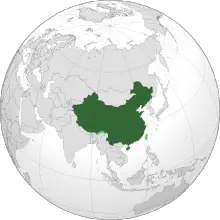
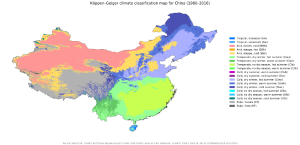
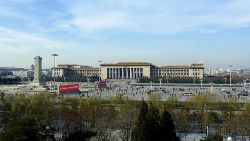
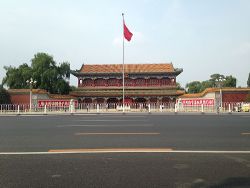
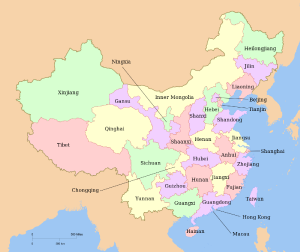
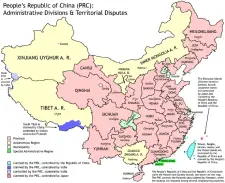
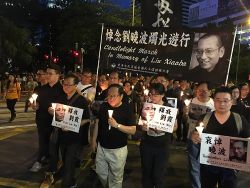
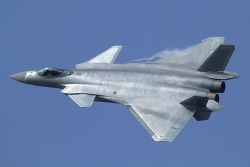
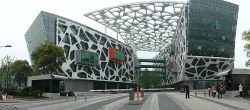
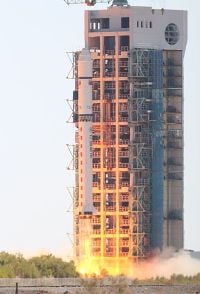
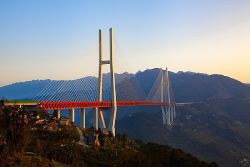
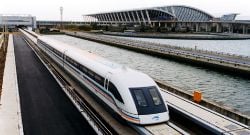

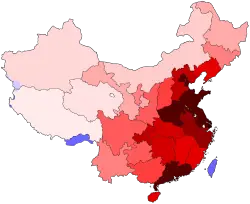
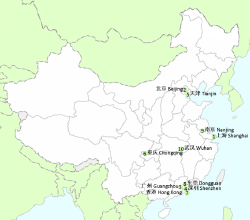
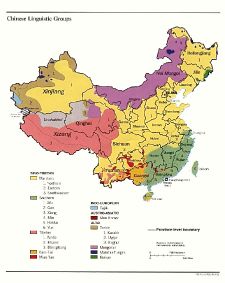
![The Temple of Heaven, UNESCO World Heritage site, symbolizes the relationship between earth and heaven.[121]](/d/images/thumb/0/0a/Temple_of_Heaven%2C_Beijing%2C_China_-_010_edit.jpg/1000px-Temple_of_Heaven%2C_Beijing%2C_China_-_010_edit.jpg)
